Quartz
The large grain in the center of these photos is quartz. Quartz has no cleavage but often, as can be seen here, develops fractures. The key to distinguishing fractures from cleavage (in thin section) is that fractures have random orientations and do not form "en echelon" - meaning they do not form sets of parallel cracks..
Sillimanite is also present in this view -- in the lower left of the photo. The blocky sillimanite crystals have higher relief than the quartz and some grains show one direction of cleavage.
Minor brown biotite is also present.
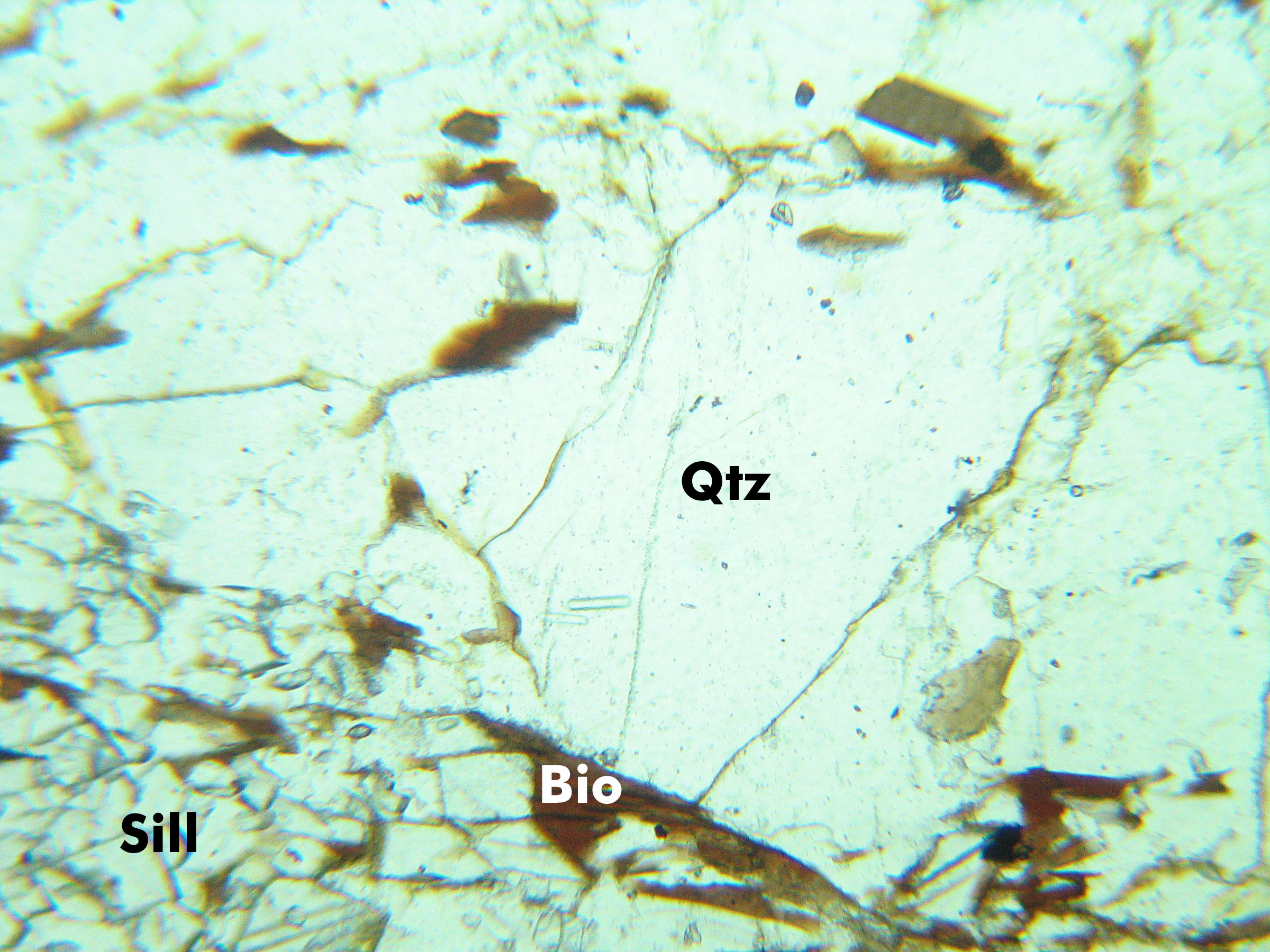
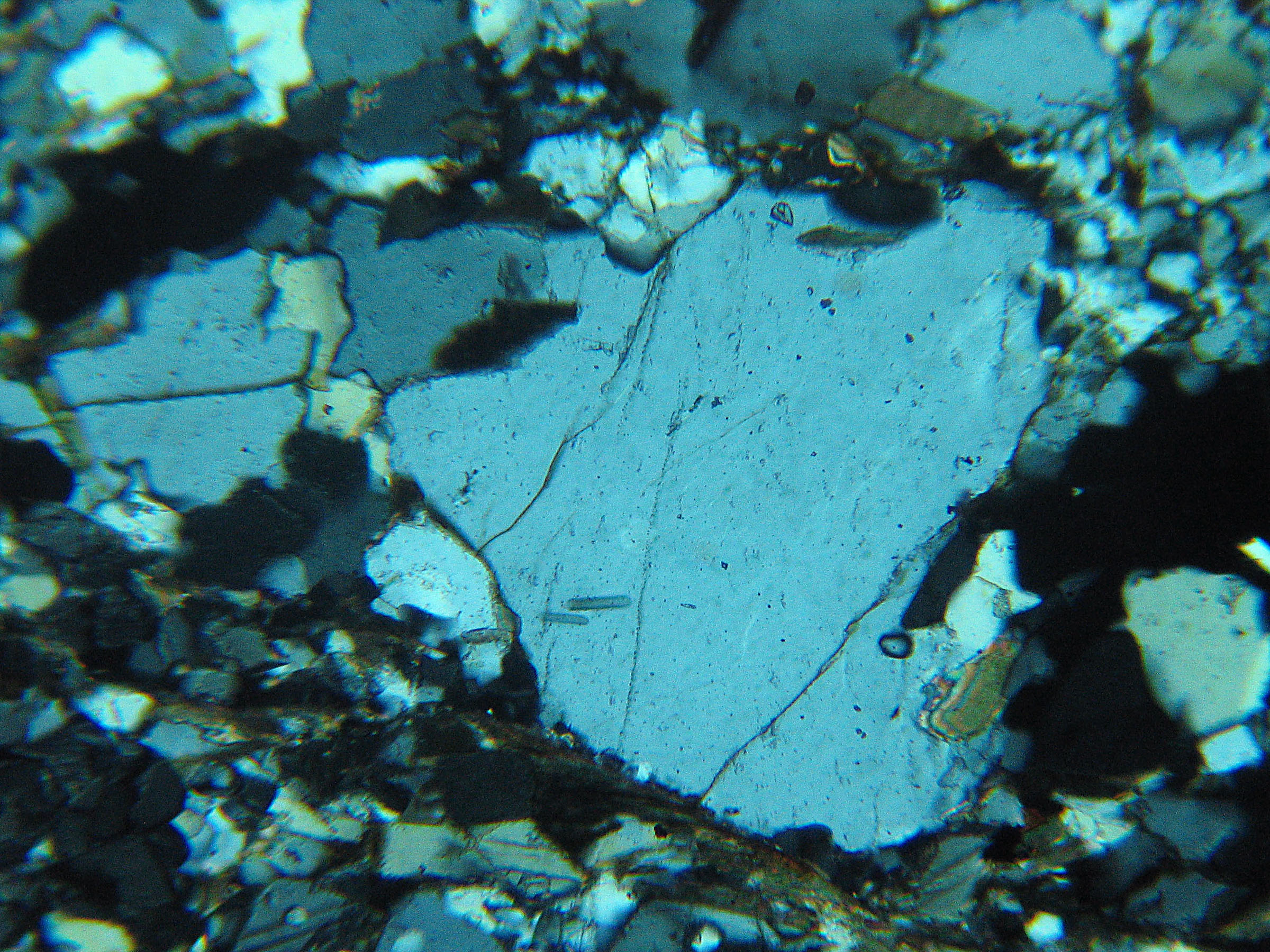
Biotite
The large greenish brown to tan grains are biotite. Biotite shows no cleavage when the view looks down on a flake. However, in other orientations biotite shows one excellent cleavage, best demonstrated by the diagonally oriented rectangular grain in the lower left corner of this photo. Note also the clear (PP) blocky mineral above and to the left of the biotite (and also below the biotite). It is orthopyroxene, and shows fractures, not cleavage.
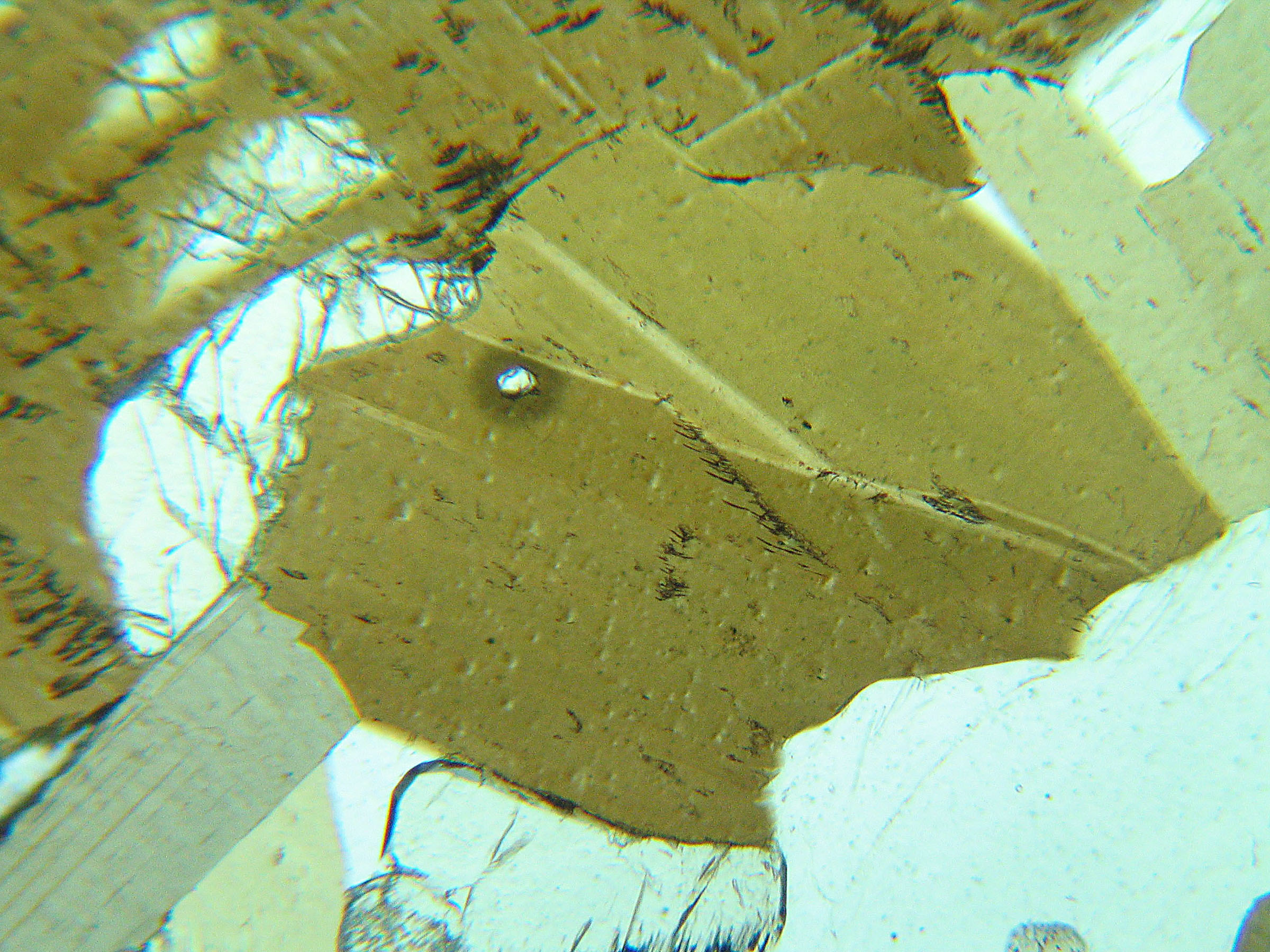
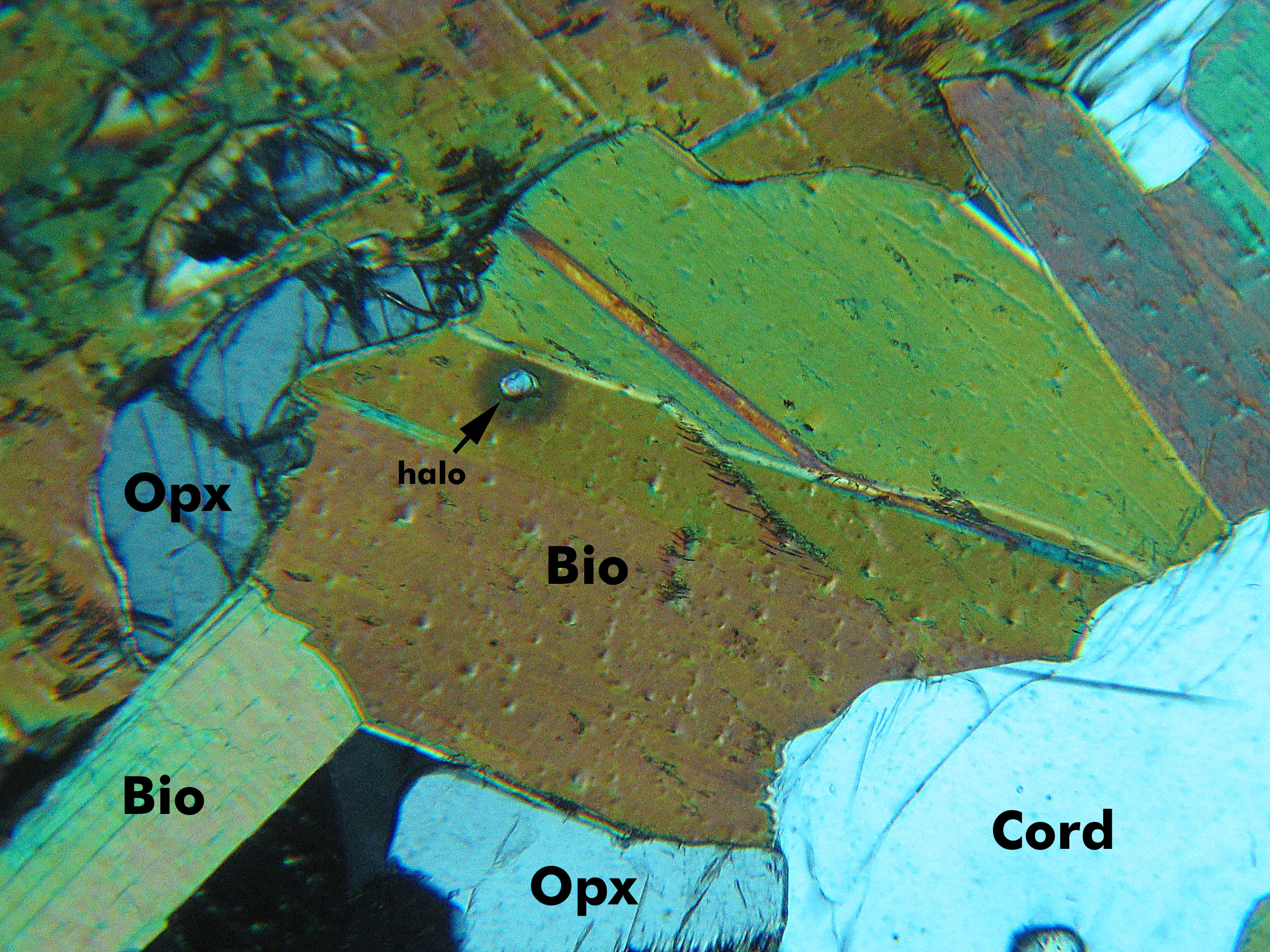
Diopside
The large grain at the center of this view is diopside. One diagnostic characteristic of diopside and other pyroxenes is that two cleavages, nearly perpendicular, are visible in basal (end) views. However, when viewed from other perspectives, only one cleavage may show. The pinkish mineral (PP) surrounding the diopside is calcite, stained for identification. In XP light, the calcite can be seen to be twinned.
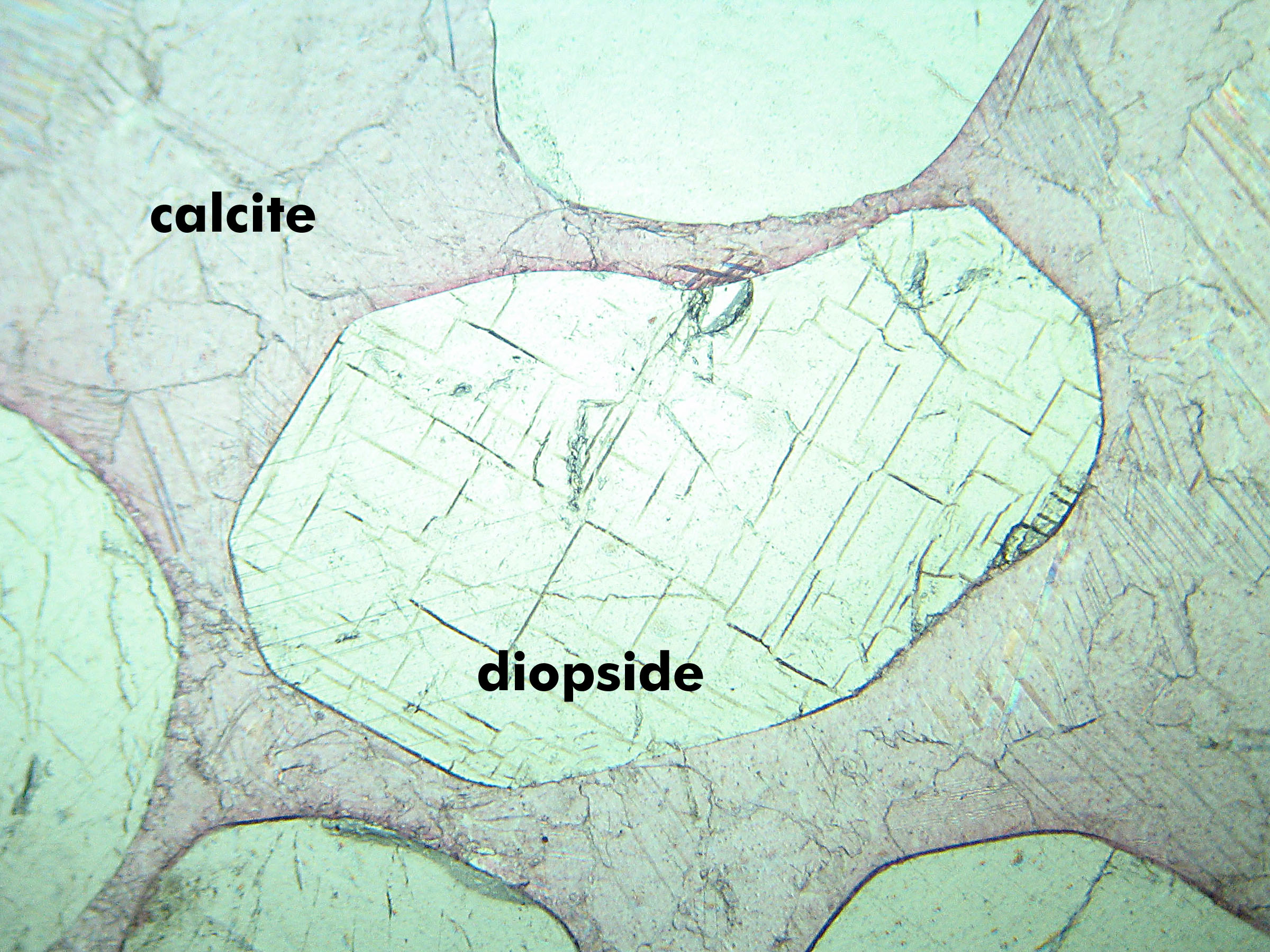
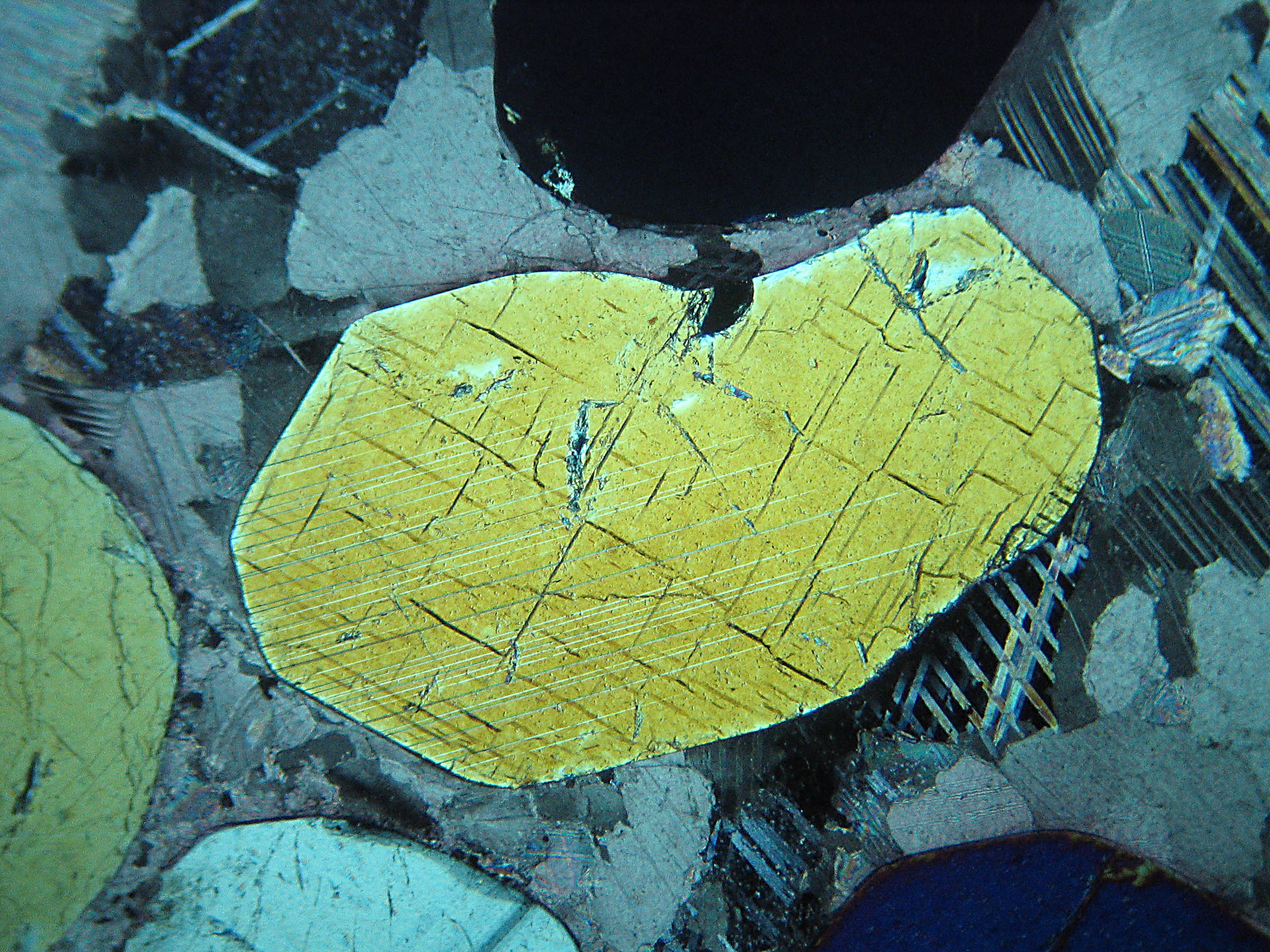
Augite
The large grain at the center of these photos is augite, a clinopyroxene. It only shows one cleavage due to grain orientation. However, in some of the other smaller augite grains it is possible to see -- or at least to imagine -- two cleavage directions. One grain of orthopyroxene is present on the left edge of the photo -- it has higher relief than the augite and is somewhat fractured. A grain of spinel (green in PP) is also present.


Hornblende
Here we see one large, and several small grains of green hornblende. Hornblende is an amphibole. Like pyroxene, amphiboles are characterized by two cleavages, visible in some views. For amphiboles, the angle between the cleavages is close to 60o in perfectly oriented end views. (In pyroxenes, the angle is close to 90o.) In views that are not perfectly oriented, the apparent cleavage angle is smaller, depending on grain orientation.


